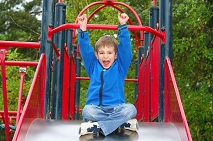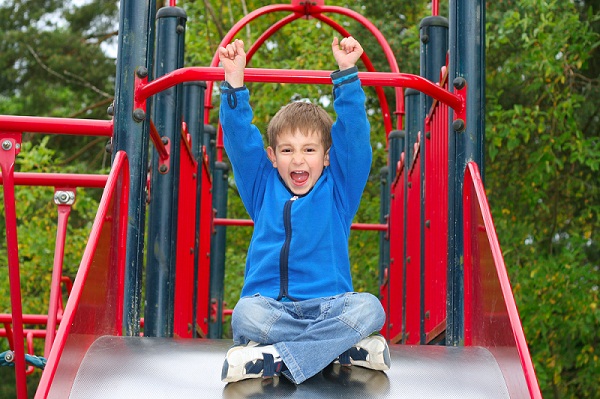Give Kids a Break: The Value of Recess

The new policy statement by the American Academy of Pediatrics about the importance of recess time brought back some vivid memories of my days on the playground. I remember when my grammar school in San Francisco had two recess periods: one in the morning and one in the afternoon. Since the weather was mild most of the year, recess was something we could count on year round.
Recess is Time to Decompress
During those times on the playground, my mind was cleared of all academic thoughts and focused solely on the escape of free play. This meant when I returned to the classroom, I was ready to jump back into my lessons. I was mentally refreshed with a renewed perspective on the subject at hand. I was also physically rejuvenated, my body exercised and ready to sit quietly to learn.
Recess More Than Just Play
The AAP statement is consistent with research by neuroscientists who recommend “brain breaks” every 90 minutes in order to increase productivity. Recess provides children with free unstructured time to engage in physical activity that helps them develop healthy bodies and the enjoyment of movement. It also provides children the opportunity to practice life skills such as cooperation, taking turns, being a good sport, following rules, sharing, communications, negotiation, problem solving and conflict resolution. And along the way, they might win a few marbles.
Parents Can Help Bring Back Recess
Parents can play a particularly important role in helping their children to have more productive school time by allocating home time for outdoor activities in natural settings and by being strong advocates for schools to offer more safe outdoor time and experiences for their children, including recess time.
- Do the Homework: Join NWF’s Eco-Schools USA program and use our recess policy audit tool to evaluate your school’s current policy.
- Talk in School: Bring together parents, teachers, and administrators to restore recess at your school and school district.
- Build on Models: Work with the school, district or state to adopt a model recess policy.
- Share with Others: Connect with other campaign leaders to exchange learning and tips.
How do you plan to advocate for allocated recess time at your child’s school?
This post was originally published on the National Wildlife Federation blog. The National Wildlife Federation (NWF) is America’s largest conservation organization, inspiring Americans to protect wildlife for our children’s future. Be Out There™ is NWF’s movement to reconnect families with the outdoors. Kids today spend twice as much time indoors as their parents did, missing out on the simple pleasures and lasting mental and physical health benefits of daily outdoor time. NWF’s practical tools and information help make being outside a fun, healthy and automatic part of everyday life for American families. For other helpful resources and to learn more about NWF’s goal to get 10 million more kids spending regular time in the great outdoors, visit: www.BeOutThere.org. For more National Wildlife Federation news, visit: www.nwf.org/news.

